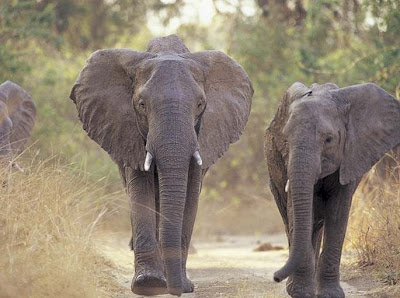Beauty Of Animal | Asian Elephant | Asian Elephant is a (Elephas maximus) is the only living species of the genus Elephas and distributed in Southeast Asia from India to Borneo in the west to the east. Three subspecies are Elephas maximus maximus from Sri Lanka, the Indian elephant or E. m. recognized from mainland Asia indicus and E. m. sumatranus from the island of Sumatra. Asian elephants are the largest living land animals in Asia.
Asian elephants are quite durable, with a maximum recorded life span of 86 years.n are generally smaller than Asian elephants and African elephants have the highest body point on the head. Large elephant bulls weigh up to 5400 kg £ 12 000 ft and 3.2 m high at the shoulder 10. The skeleton makes up about 15% of their body weight. The sizes of the wild Asian elephants have been exaggerated in the past. Elephants can record ft measured as high as 3.7 m 2 at the shoulder have. Shoulder height is estimated with the rule of double forefoot circumference.
Asian elephants are quite durable, with a maximum recorded life span of 86 years.n are generally smaller than Asian elephants and African elephants have the highest body point on the head. Large elephant bulls weigh up to 5400 kg £ 12 000 ft and 3.2 m high at the shoulder 10. The skeleton makes up about 15% of their body weight. The sizes of the wild Asian elephants have been exaggerated in the past. Elephants can record ft measured as high as 3.7 m 2 at the shoulder have. Shoulder height is estimated with the rule of double forefoot circumference.
Scientific classification
Kingdom: Animalia
Phylum: Chordata
Class: Mammalia
Order: Proboscidea
Family: Elephantidae
Genus: Elephas
Species: E. maximus
The height of the adult male is usually not more than nine feet, 2.7 m, and the female eight feet 2.4 m, but these dimensions are exceeded and sometimes significantly. George P. Sanderson measured a male standing nine feet seven inches 2.9 m at the shoulder, and measuring 26 feet two and one half inch 8 m from the top of the fuselage to the tip of the tail, and he draws on other and reaching nine feet eight inches 2.9 m and nine feet ten inches 3 m at the shoulde note. It is smoother than the African elephant, and is on the trunk, ears or neckBody average temperature is 35.9 ° C depigmented (96.6 ° F).
Elephants are crepuscular. Elephant herds follow well-defined seasonal migration routes. Herds range 8 to 21 animals. Adult males do not depend on a herd of cows, if it contains a female in heat. More than a grown man, they can accompany cows, but in general the dominant bull will mate with the cows. Younger bulls will occasionally engage in mock combat. To strong female fights for access are extremely rare. Elephants in small groups as "bachelor herds' known, but cops can also move independently at different times.
Elephants are able to distinguish low amplitude sounds. They use to communicate with infrasound, this was first taken by the Indian naturalist M. Krishnan noted and examined later by Katharine Payne. A full-grown adult healthy male Asian elephant has few natural enemies, but there are rare cases of tiger hunting on young or weak elephant was.
Find Here The Kinds Of Animals and Flora and Fauna





































